Yakisoba Sauce (Homemade Japanese Noodle Sauce)
Yakisoba sauce has the perfect balance of sweet, savoury and umami flavours to season your favourite stir-fry dishes. It takes just minutes to make and adds a flavour punch to any noodle dish. Try this easy homemade yakisoba sauce recipe today!
Yakisoba sauce is a classic Japanese noodle sauce. It has the perfect balance of sweet, savoury and umami flavours that pairs perfectly with yakisoba noodles, udon noodles, ramen noodles or any other stir-fried noodle dish.
This easy Japanese yakisoba sauce recipe requires only five simple ingredients and five minutes to mix it all together.
You only need two tablespoons of homemade sauce per portion of noodles. But you can easily double the recipe and store any leftover yakisoba sauce in an airtight container for up to 2 weeks. Then, add it to any meal in need of an umami flavour punch.
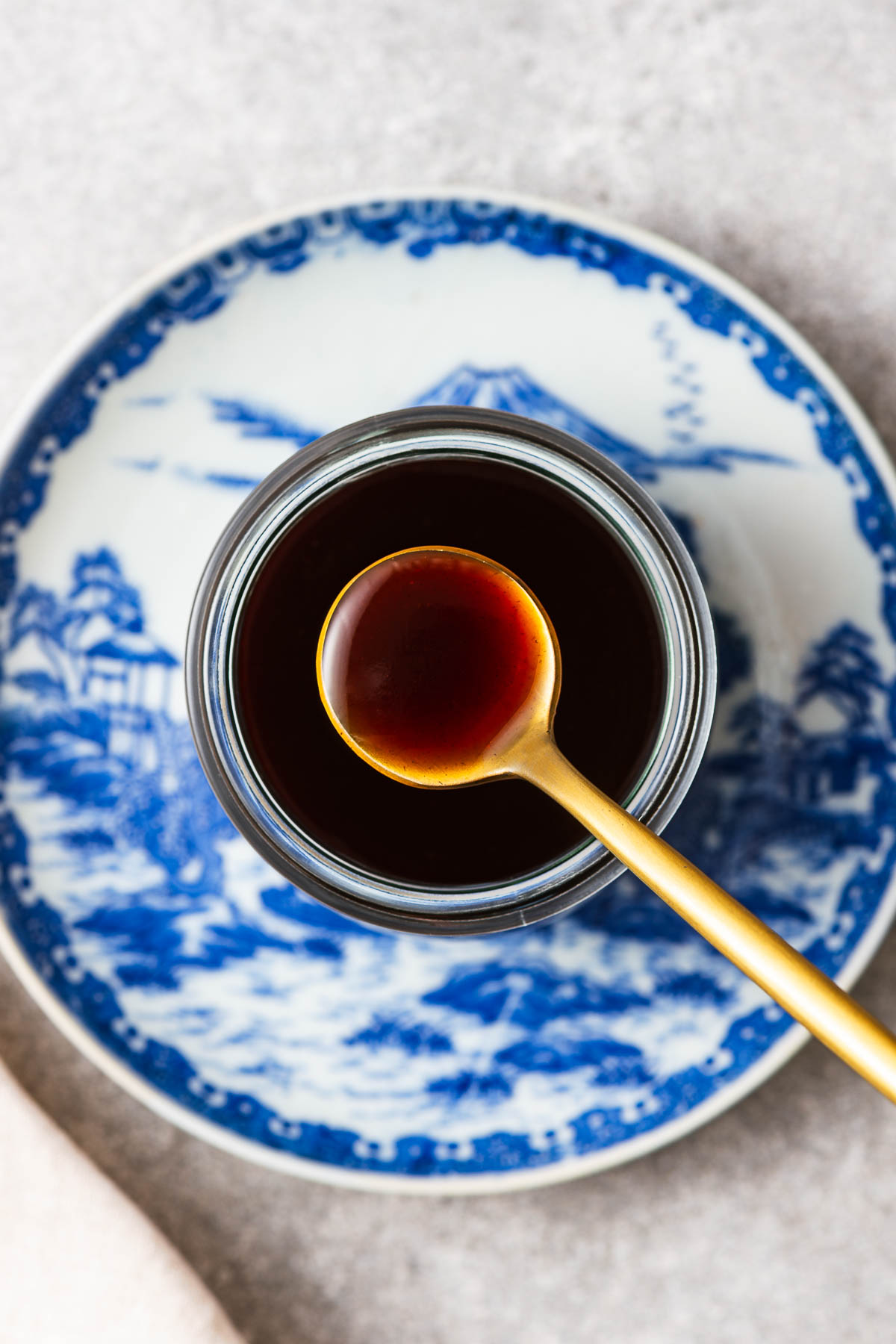
Why you’ll love homemade yakisoba sauce
It’s easy to see why you’ll love this homemade yakisoba sauce as much as I do:
- It’s super easy to make: All you need is five minutes to mix together the five simple ingredients.
- It’s flavour-packed: The combination of oyster sauce, soy sauce, ketchup, Worcestershire sauce and sugar creates an umami-packed sauce with a perfect balance of sweet, savoury and umami flavours.
- It’s versatile: This yakisoba sauce works great with yakisoba noodles (the traditional Japanese choice), but also with ramen, udon or any other Asian noodles. You can even use it as a marinade for pork belly or an easy dipping sauce.
Yakisoba sauce ingredients and substitutes
This yakisoba sauce is an easy-to-make Japanese sauce that is the perfect companion for Japanese stir-fried noodles.
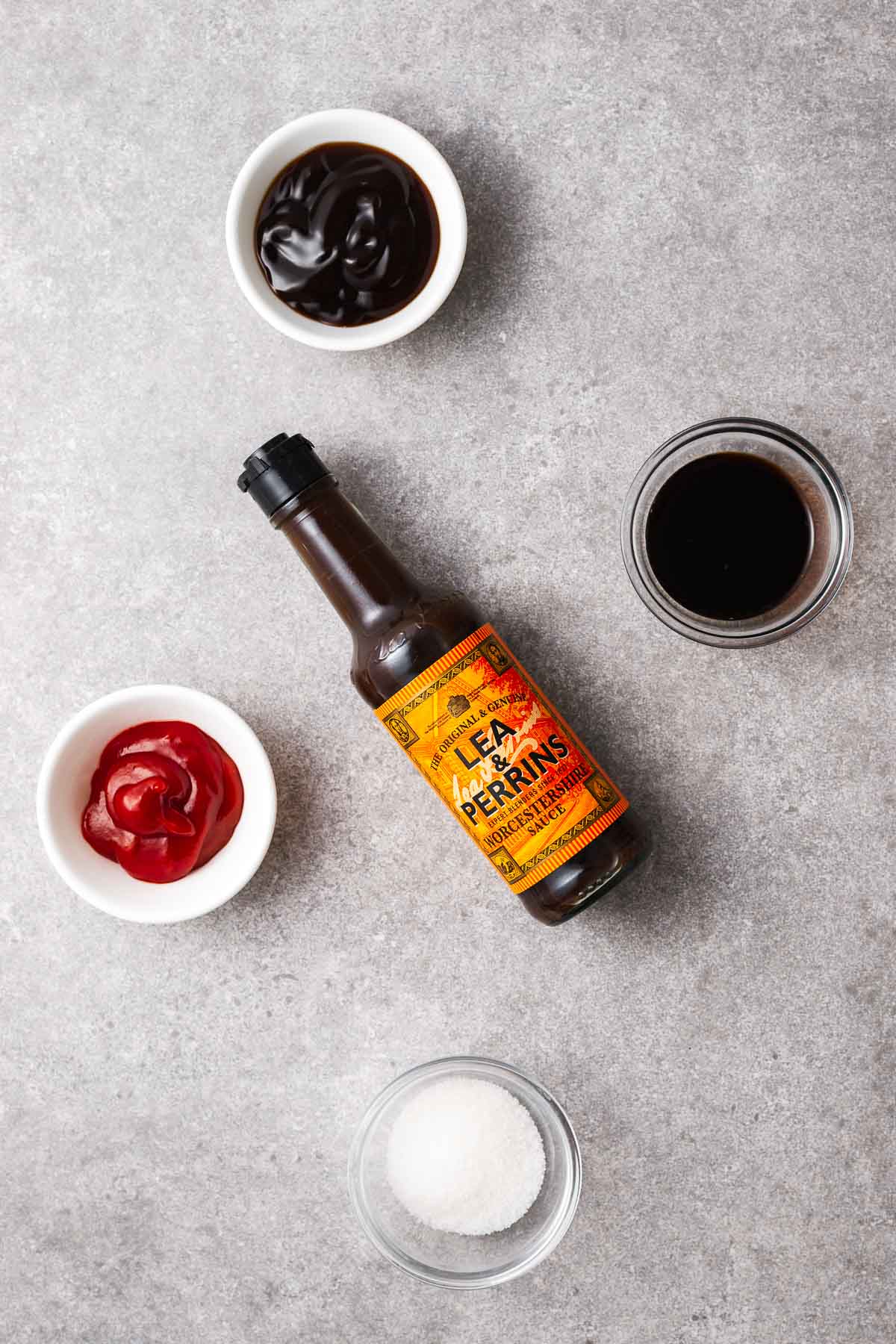
It requires just a few ingredients:
- Oyster sauce: Oyster sauce adds a sweet and savoury flavour to this yakisoba sauce. But if you are allergic or prefer a plant-based sauce, you can use vegan stir-fry sauce instead.
- Soy sauce: Use all-purpose or light soy sauce. Dark soy sauce is too intense for this recipe.
- Ketchup: Use your favourite tomato ketchup for a flavourful yakisoba sauce. If your tomato sauce is not very acidic, you can add a small splash of rice vinegar to balance the sauce.
- Sugar: I use white sugar, but you can use brown sugar or your preserved sweetener.
- Worcestershire sauce: I use Lea & Perrins, but you can use any brand you have.
Store-bought oyster sauce, soy sauce and Worcestershire sauce typically contain gluten. You can swap the combination for a shop-bought gluten-free stir-fry sauce. But you’ll need to adjust the sweetness and acidity of tomato ketchup to taste.
Learn more about oyster sauce vs hoisin sauce.
How to make yakisoba sauce
This simple sauce is similar to classic Otafuku Yakisoba sauce, a popular Japanese stir-fry sauce found in many Asian grocery stores.
But once you see how easy it is to make homemade yakisoba sauce, you’ll never buy store-bought sauce again!
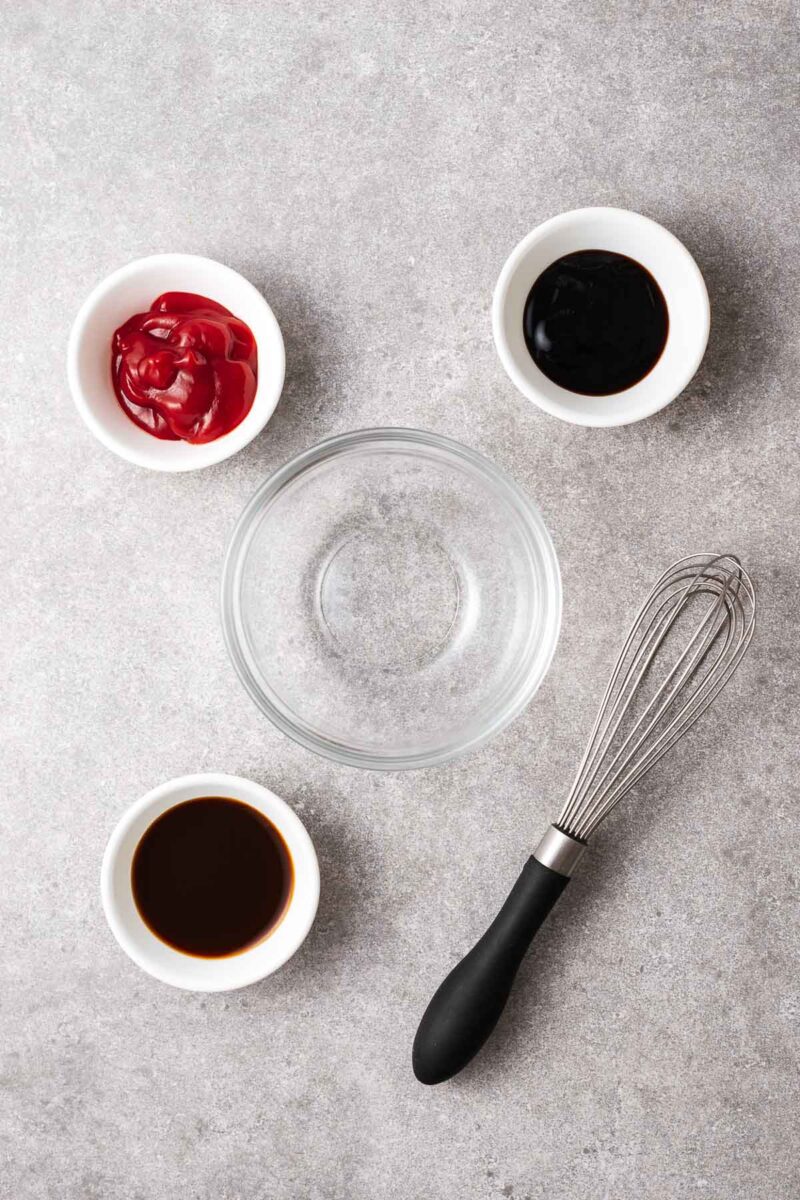
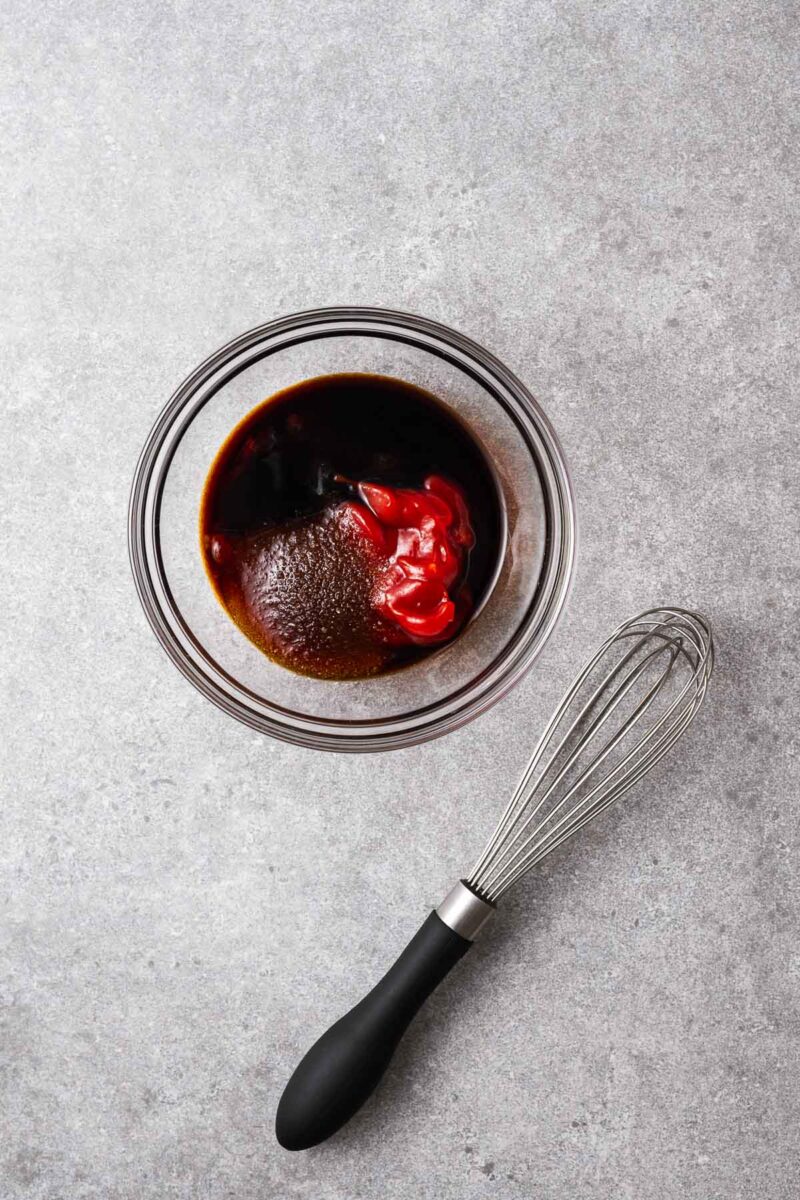
Step 1: Gather your ingredients. You will need:
- three tablespoons of oyster sauce or vegan stir-fry sauce,
- one and a half tablespoons of soy sauce,
- two tablespoons of ketchup,
- one and a half tablespoons of sugar and
- four tablespoons of Worcestershire sauce.
This makes about a ¾ cup of sauce. You can easily double the recipe if you need more sauce.
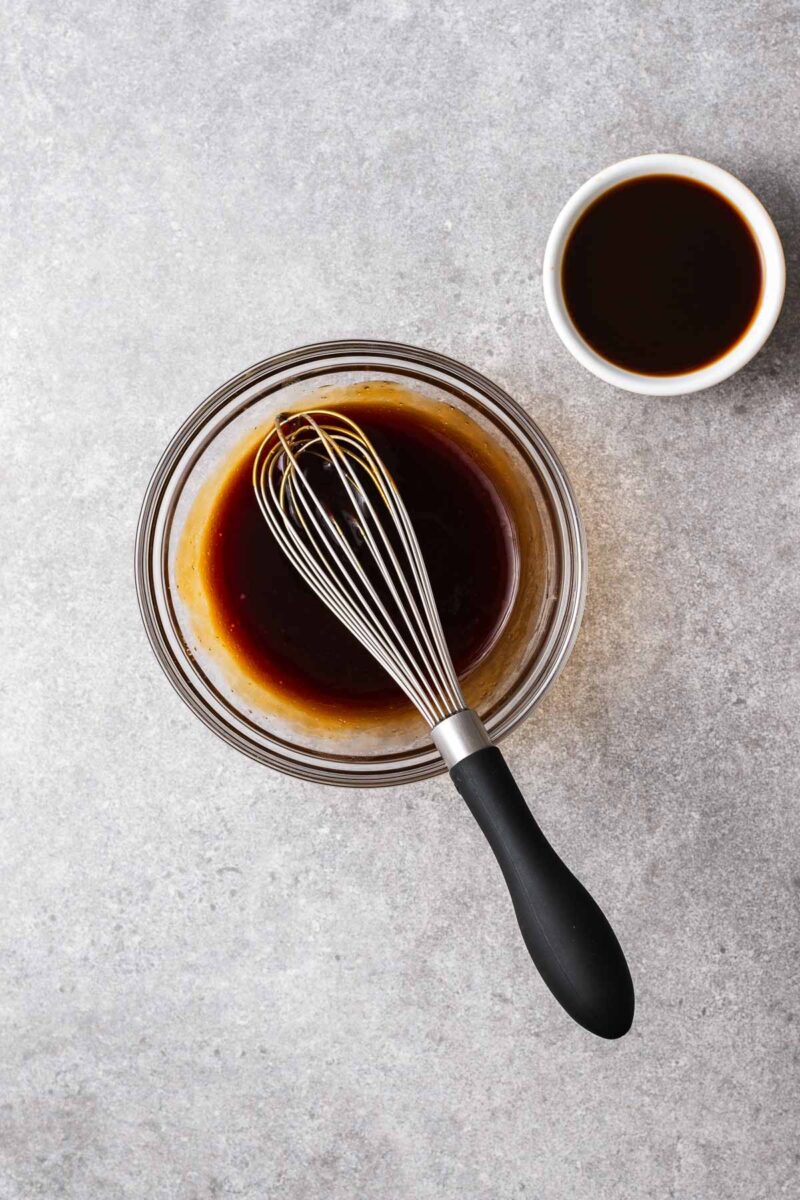
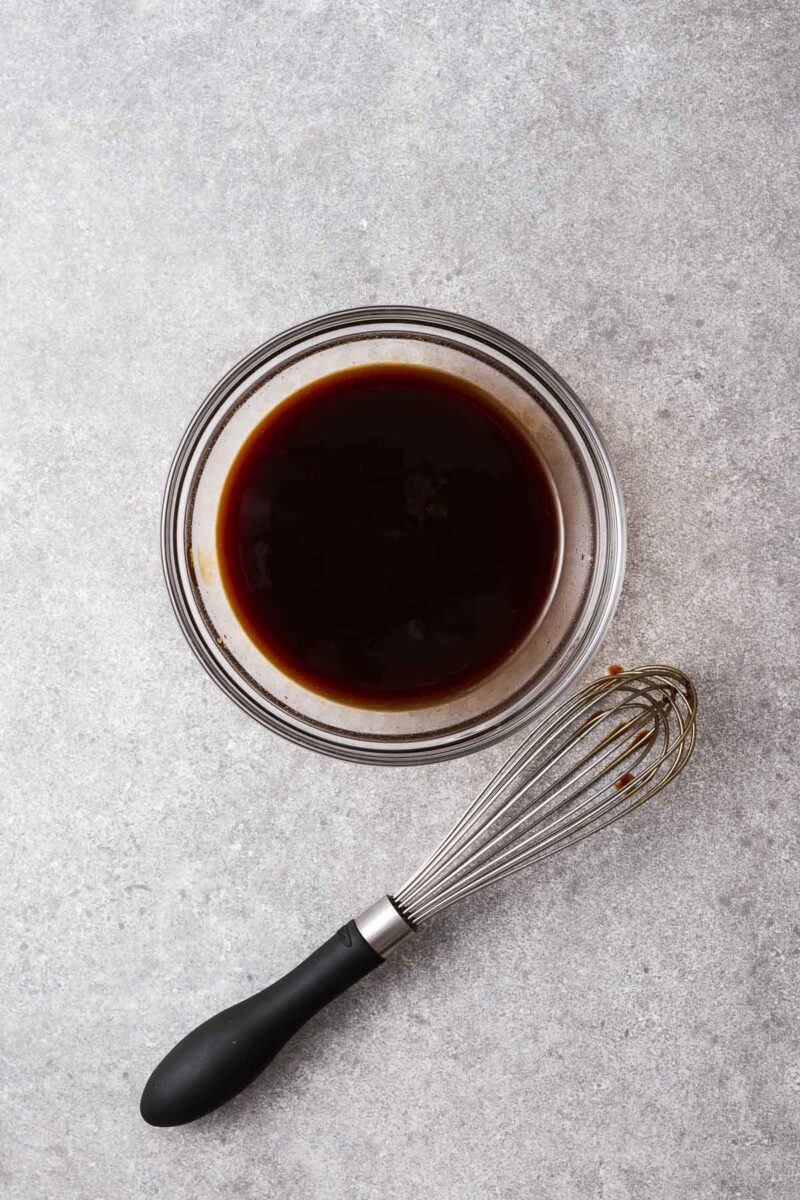
Step 2: Combine the ingredients. In a small bowl, add the oyster sauce, soy sauce, ketchup and sugar. Whisk together until the sauce is well combined and sugar has dissolved.
You can also microwave the mixture in a microwavable bowl for 20 seconds to help the sugar dissolve.
Step 3: Adjust the seasoning. Stir in the Worcestershire sauce. Taste and season with more sugar for a sweeter sauce or a pinch of salt for a savoury boost – until the sauce is balanced to your liking.
It should be punchy and bold in flavour because you will only add 2 tablespoons per portion of noodles.
The sauce works great with yakisoba noodles – the traditional Japanese choice. But it is delicious with all noodle dishes.
Try it with ramen noodles, udon noodles, egg noodles or any other stir-fried noodle dish.
Storage: Refrigerate leftover yakisoba sauce in an airtight container for up to two weeks.
Yakisoba sauce serving suggestions
Yakisoba sauce is an essential ingredient in Japanese yakisoba noodle dishes.
It’s also a great all-purpose sauce for Japanese cooking. It’s sweet, savoury, and umami-packed – and it only takes a minute to make!
Try homemade yakisoba sauce in these dishes:
- Yakisoba noodles: Make classic chicken yakisoba noodles with pre-cooked ramen noodles, thin strips of chicken, shredded green cabbage, and the perfect balance of sweet, savoury, and umami-packed yakisoba sauce. The easy Japanese fried noodles deliver delicious street food vibes.
- Yaki udon: If you can’t find the par-cooked yakisoba noodles, use udon noodles for deliciously chewy stir-fried udon noodles.
- Vegetable stir-fry: Fry sliced yellow onion and julienned vegetables over high heat. And, stir in yakisoba sauce at the end of cooking.
- Fried rice: Turn your egg-fried rice into a flavourful and savoury dish with yakisoba sauce. To serve, drizzle with toasted sesame oil and top with sliced scallions.
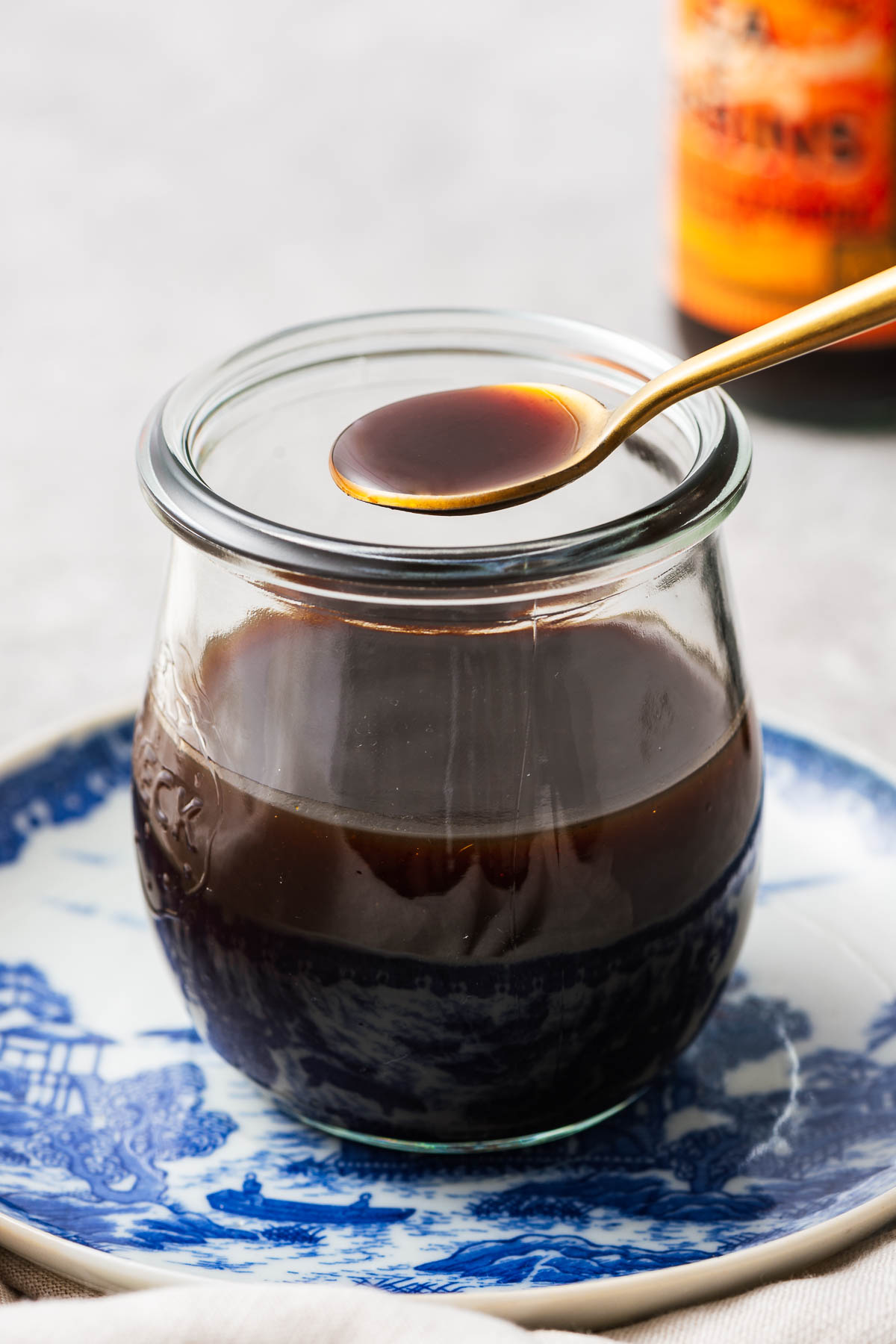
Frequently asked questions
Yakisoba sauce is a traditional Japanese noodle sauce. It is a soy-based sauce with a savoury, sweet, and tangy flavour. In addition to soy sauce, homemade sukiyaki sauce also includes Worcestershire sauce, oyster sauce, tomato ketchup and sugar.
No, yakisoba sauce and teriyaki sauce are not the same. Teriyaki sauce is a sweet and savoury sauce made with soy sauce, sake, and mirin, while yakisoba sauce is a savoury, sweet, and tangy sauce made with a combination of tomato ketchup, oyster sauce, and Worcestershire sauce.
No, yakisoba noodles are not the same as ramen noodles. They are both wheat flour noodles. But yakisoba noodles are sold steamed and greased while ramen noodles are typically sold as dried noodles.
Yakisoba is a type of Japanese stir-fry made with yakisoba noodles, vegetables, and meat while stir-fry can refer to any combination of meat, vegetables or noodles pan-fried over high heat. Additionally, yakisoba stir-fry is cooked with yakisoba sauce.
More Japanese sauces
- Sukiyaki sauce (for hot pot dishes)
- Goma dare (sesame sauce for dipping)
- Homemade okonomiyaki sauce (for savoury pancakes)
- Miso mayo
- All-purpose miso sauce, glaze and marinade
- Mentsuyu (concentrated soup base)
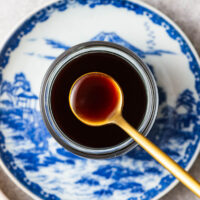
Ingredients
- 3 tablespoons oyster sauce , or vegan stir-fry sauce
- 1½ tablespoons soy sauce
- 2 tablespoons ketchup
- 1½ tablespoons sugar
- 4 tablespoons Worcestershire sauce , I use Lea & Perrins
Instructions
- Combine the oyster sauce, soy sauce, ketchup and sugar in a small bowl. Mix until the sugar has dissolved. You can microwave the mixture in a microwavable bowl for 20 seconds to help the sugar dissolve.
- Stir in the Worcestershire sauce.
- Taste and season with more sugar for a sweeter sauce or a pinch of salt for a savoury boost – until the sauce is balanced to your liking. It should be punchy and bold in flavour because you will only add 2 tablespoons per portion of noodles.
Notes
- The Japanese noodle sauce works great with yakisoba noodles – the traditional Japanese choice. But you can use it with ramen noodles, udon noodles, or any other stir-fried noodle dish.
- Refrigerate the yakisoba sauce in an airtight container for up to 2 weeks.

This noodle sauce was so delicious! Will definitely be making it again.
Thanks, Paula! I’m so happy you loved the noodle sauce. 🍜
I used this on some storebought ramen noodles and it was really amazing. I loved it so much!
It’s such a great way to upgrade store-bought ramen! I’m so happy you enjoyed.
This Yakisoba Sauce recipe is wonderful! It’s easy to make and adds a delicious, authentic flavor to any stir-fry dish. Perfect for a quick and tasty meal. Thank you!
Thanks so much, Heather! I’m so happy you enjoyed it!